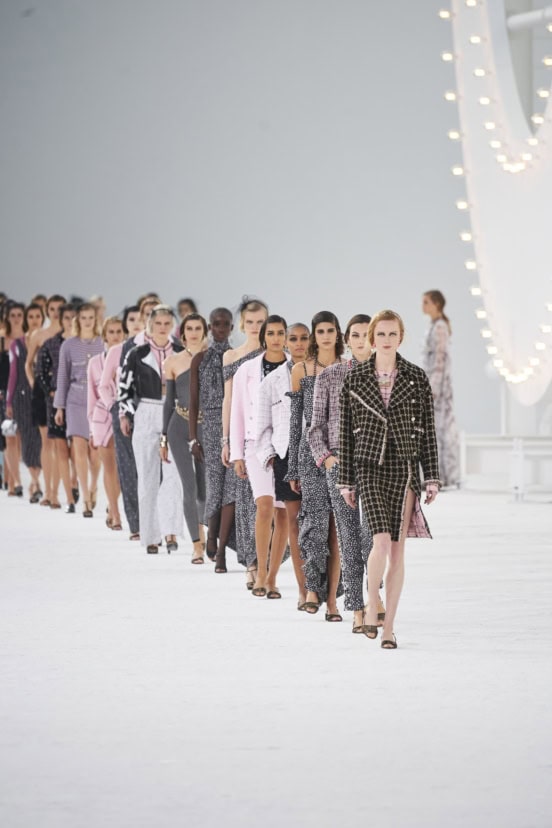Review of Chanel Spring 2021 Fashion Show
The House that Gabrielle Built
By Long Nguyen
After over two years of extensive renovation, the Palais Galliera Musée de la mode de la ville de Paris reopened last week with an anchor exhibition – Gabrielle Chanel Manifeste de Mode that will run through near the end of March 2021.
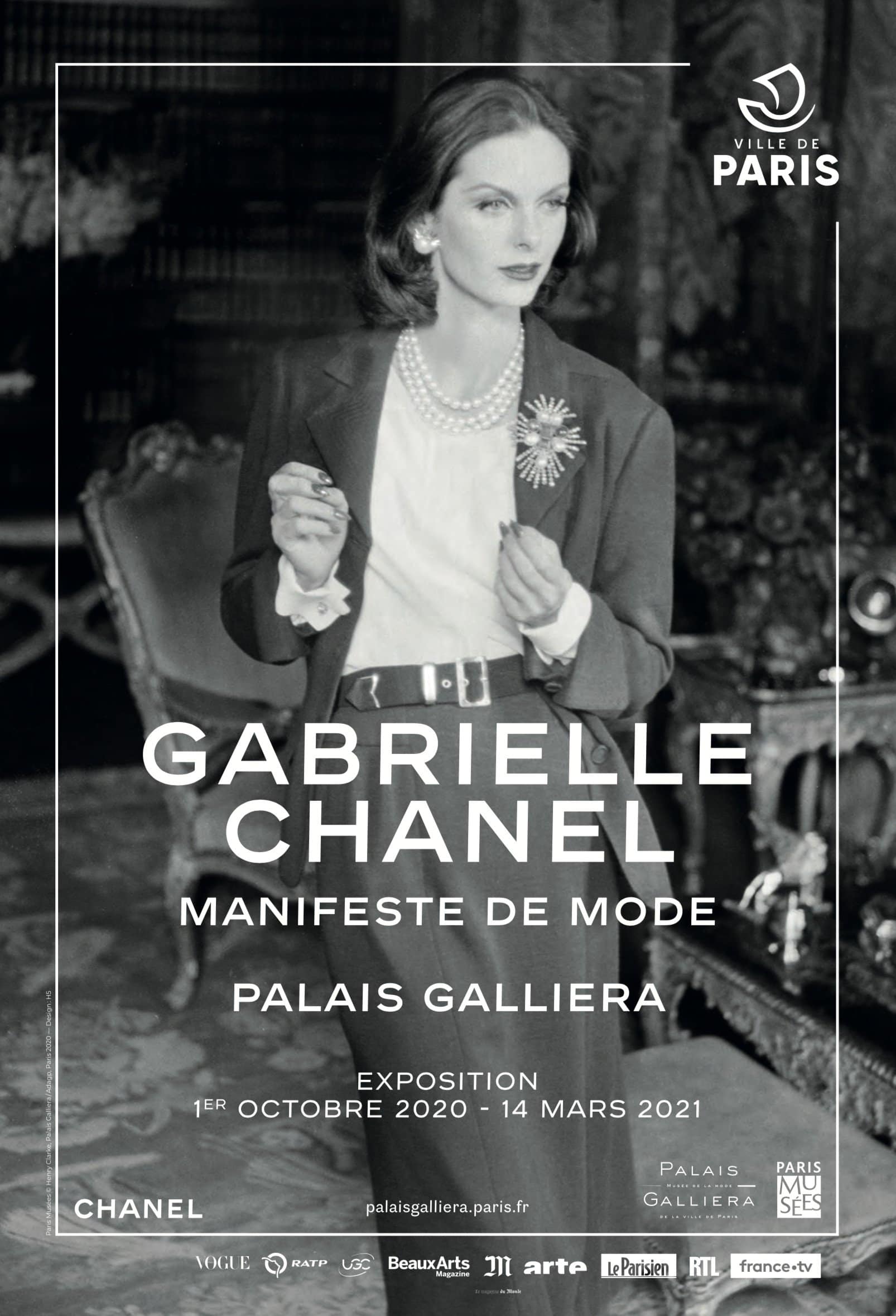
Manifeste de Mode (henceforth Manifesto) is divided into two parts, the first recounts in visual chronological and biographical order her life after the first war and her first jersey creations to the little black dresses in the twenties and the more glamorous outfits from the thirties to the creation of the first fragrance N° 5 in 1921 to the reopening of her fashion house in 1954. Along the exhibition was a gallery of ten portraits of Gabrielle Chanel giving the glimpse of how she represented the image and the spirit of the brand that bears her name.
The second part of Manifesto concentrates on the codes that are the heritage of Chanel then and now – the braid tweed suit, the two-tone pumps, the 2.55 quilted bag, the costume jewelries, the colors black and beige among others. Here the audience is treated to all the accouterments of what is know today as the Chanel heritage. I have not seen this exhibition but I have seen the actual 1916 marinière, the sailor blouse in jersey, and the first bottle of the fragrance at the ultra modern and high tech Patrimoine de Chanel archives in Pantin, north of Paris, that housed the holdings of the entire archive in climate control facilities.
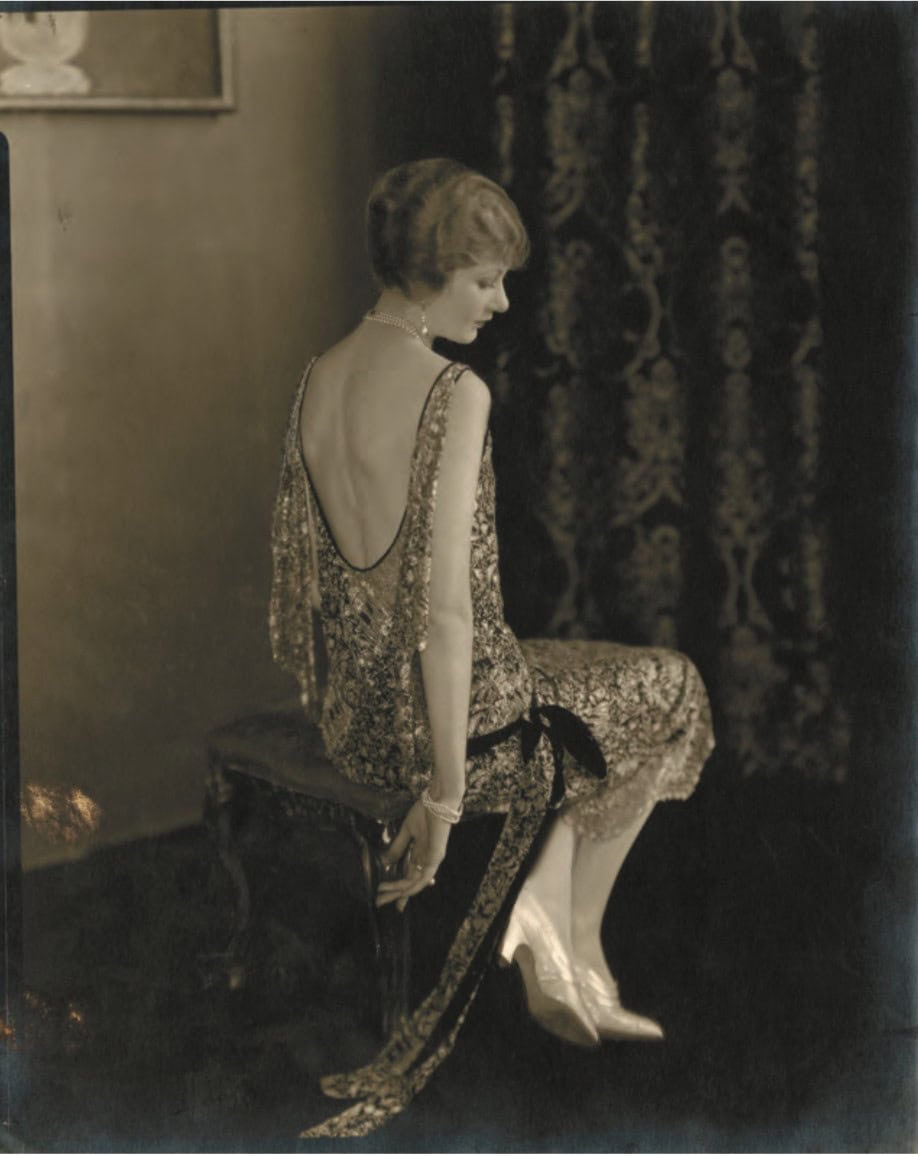
The essence of this Manifesto exhibition attempts to decipher with clarity how Chanel’s style derived from her desire for clothes to be free of constraints, freedom of movements and freedoms from societal dictates – from these ethos she created clothes that adapted men’s wardrobe functionality to more comfortable garments for women made with soft jersey for example and established her tweed skirt suit as a counterpoint to its male pantsuit version without ceding any grounds to the perception of beauty and power of her tweeds two pieces ensemble. She avoided ostentatious and frivolous decorations for the clothes she designed and produced for women in favor of her extensive deployment of custom jewelry that contrasted to a more restraint background of monochrome silks and wool tweeds. “It is the material that makes the dress and not the ornaments that can be added to it,” she said from the catalogue of the exhibition.
Chanel created a new femininity using the language of her clothes to mold a new image of the modern women or at least her version of the clothed modern women that simply became the modern women in actuality. This language is continued today via the continuous sets of exhibitions around the world and via the seasonal fashion shows.
Chanel is the first major company to announce its adherence to its own six yearly shows at a time when others are wavering and are wondering what the future is. Chanel is certain of the future of its fashion show because the shows are intrinsic to keep the Chanel ‘heritage’ fresh in the air.
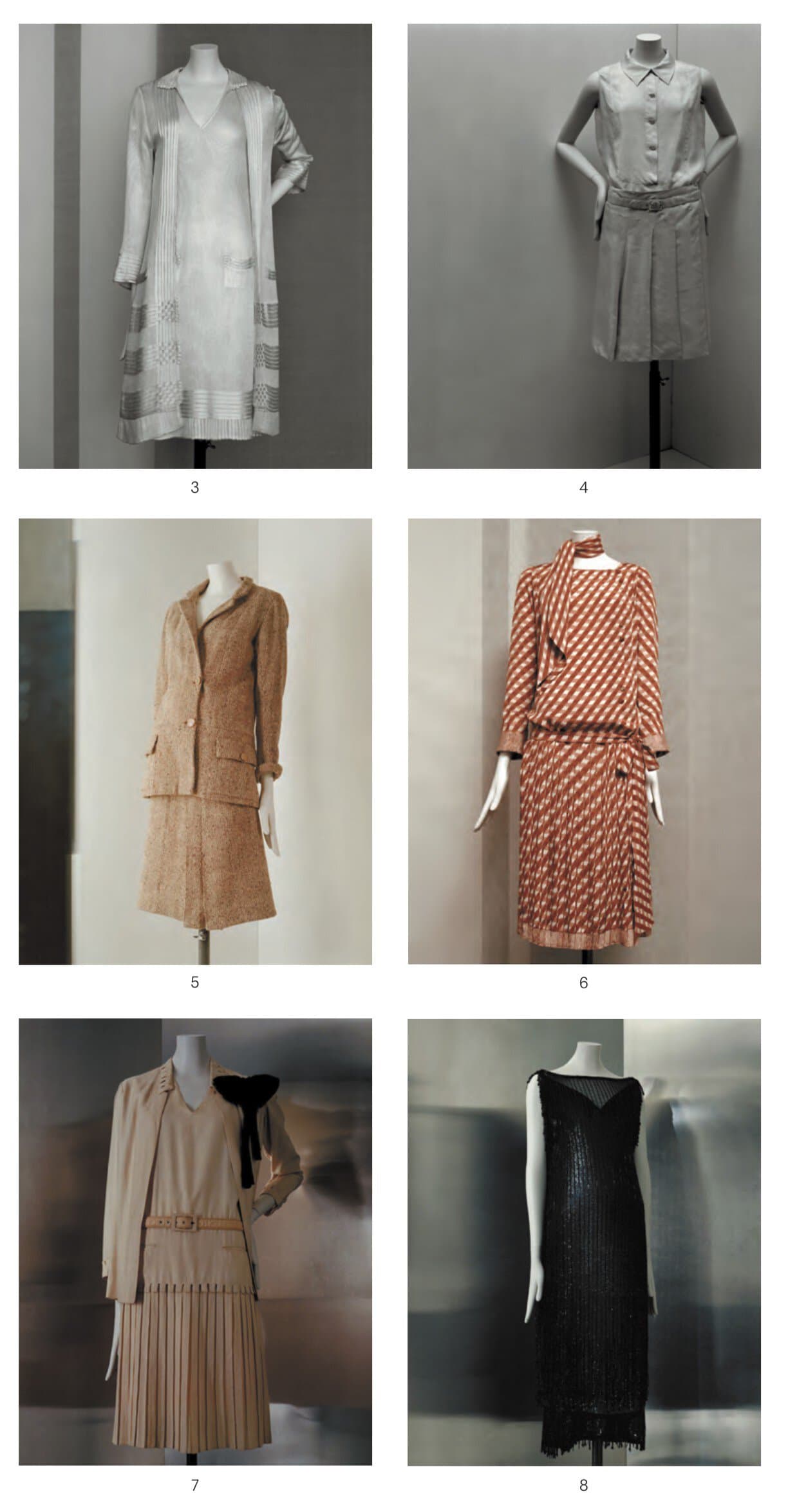
Museums exhibitions are a direct conduit relaying the past directly to the present whereby the audience and the exhibition are in a direct and personal dialogue. These exhibitions also serve as a way to remind global audiences on a constant basis of the primal historical importance of the brand and the implication of that history today in the continued and on going marketing of this rich heritage that now can take on new shapes, new colors, and new materializations of the tweed fabrics.
Chanel partnered with the Palais Galliera on this Manifesto exhibition providing many of the garments, fragrance bottles and other artifacts shown at the Paris museum. There are reasons why Chanel has mounted or collaborated on this and along few other art exhibitions devoted to Chanel’s life and work in the last few years – the Mademoiselle Privé in Shanghai then Tokyo in 2019, Chanel at the Metropolitan Museum in 2005, the Chanel: Designs for the Modern Woman at the Mint Museum Randoph in Charlotte, NC in 2012, The Chanel Legend at the Draiflessen Collection, Mettingen in 2013 then travel to the Museum für Kunst und Gewerbe in Hamburg in 2014.
Exhibitions recreate the heritage as not as a memory of a distant past but as a current event – that whatever is being curated and confined within the enclosed wall of the sacred space of a museum isn’t about showing the past but it’s about how this particular past is actually relevant and more importantly how it represent the present moment. These exhibitions create the respective fashion stories and the cultural and social environments that link garments to society at large.
The scenography of a museum exhibition is not so different from the staging of a live fashion show. Both serve the same purpose of displaying the various articles or now as looks worn by models in a way that remind the audience of the recognized signatures of the Chanel heritage on the multiple mannequins at Galliera or on say the models Louis de Chevigny wearing a white tweed suit or Mica Argañaraz in a beaded strap short dress with ribbon trims in preview teasers video shot by Inez & Vinoodh inside an apartment looking outside the window.
Story telling in a live fashion show is the same as that in an exhibition by way of a multi layered communion with the audience in specific experiences to wedge this deeper relationship in fortifying the brand’s community. It can’t be accidental that the Palais Galliera opened a few days before the Chanel spring show that is taking place just before the Grand Palais will close for renovation. This Manifesto and the spring fashion show are linked together at the heart forever.
Exhibits remind of the legacy while fashion shows tell the now.
Perhaps by stripping away the ambitious ambience of the past Lagerfeld years, Virginie Viard, the creative director, is returning Chanel to one of its core value and one clearly at the center of the Manifesto exhibition – that of an embrace of simplicity and the unyielding surrendering of frivolous decorations in the clothes and by extension also in life that permeated all of Chanel aesthetics then and now. Viard’s process is one of a slow motion transition rather than a rapid next day turnover approach – but the process can be seen in the simplification of the staging of the shows both ready to wear and haute couture from the fall 2019 the Swiss chalet snow mountain retreat to the elaborate library to the Paris rooftops to the fall 2020 space age plain runway with different slight elevations.
The spring show demonstrates most forcefully how the changes in Viard’s staging of the show reflects the simplicity of the Chanel codes and this legacy of the past now alive at this last Grand Palais show. The models navigated around those giants white letters with light bulb trims that spelled CHANEL in the way that legendary sign in Hollywood does wearing new versions of clothes that are a bit sportier, more relax and much less weighted by any adornments except for some custom jewelry around their necks. The concrete floors were coated in white rather than having any raised platform, perhaps in a nod to Chanel’s new policies on sustainability to align to the values of younger consumers.
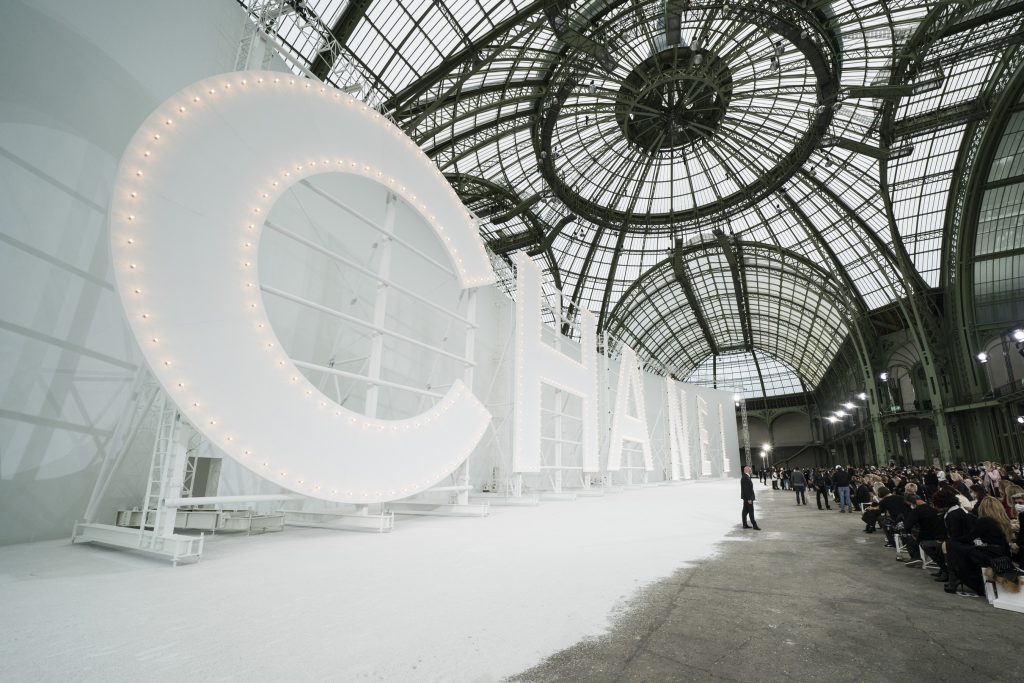
And this process of simplification is most noticeable on the clothes that Viard sent out especially today where the new tweeds suit were as light and soft and even oversized for added comfort as in the opening double breast jacket with slouchy shoulder paired with a knee length skirt with a slit on the right side of the legs. The luxury quotient of these suits is in the details: the embroidered trims, the buttons, and the complex new tweed fabrics that looked soft and hefty at the same time.
The prevailing silhouettes are clean, relaxed and mostly linear with grey tweed floor length dress, light pink cardigan with black trim pattern resembling a jacket paired with print charcoal pleated pants, pink embroidered silk dress with black chiffon cape and underskirt, an ecru sport jacket and knee length short, or a white or black crepe deep v-neck floor length vest with black silk trims paired with pocket pants.
I was thinking about actresses at the photocall, coming off the red carpet: their faces a little distracted, their attitude a little out of sync with the outfits they are wearing. And then there’s the fans waiting for them behind the barriers, this very lively side to cinema that happens beyond cinema, that’s what I like. The collection is a tribute to the muses of the house.
– Viriginie Viard, post show
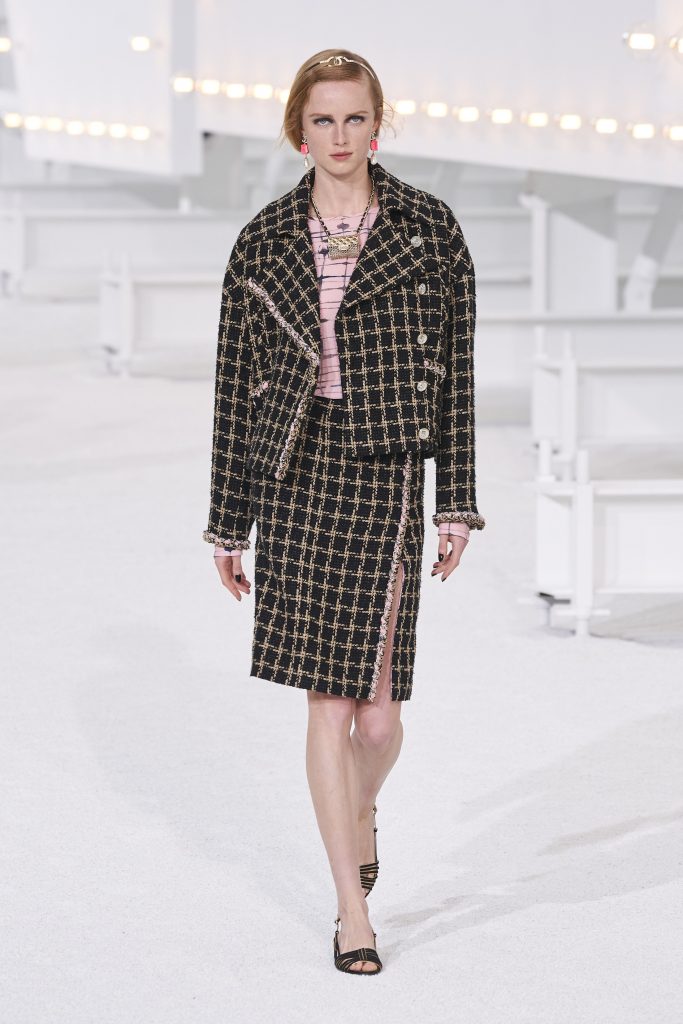
Viard thoughts brought back images of the actresses years ago hanging on the walls of the Palais Galliera not far from the Grand Palais. “Gabrielle Chanel and Karl Lagerfeld dressed so many actresses in films and in real life. I was thinking about them. But without wanting to replicate. Without falling into a vintage citation. I wanted it to be very joyful, colorful and very vibrant too,” Viard said.
Made for today and for women now, these clothes followed the road map and principles laid out long ago by the house’s founder but they are not enslaved to them. The white blouson with black lapel worn with a black logo high slit skirt and a white bra top, the ecru sleeveless classic jacket and asymmetrical fold skirt, the ecru tweed sleeveless midriff tank paired with a short and a matching loose cardigan as a three pieces suit are the new clothes designed with the fast paced life of women today in mind and the notion of comfort signaled by the current pandemic crisis where more time is spent at home than ever.
No wonder why the three models in the series of teasers before the show never actually wanted to leave their apartments. These spring clothes merge forms and functions. Even the evening clothes are significantly pared down as the embellishments of the past now float lightly on a black slim collarless jacket with light beading over black chiffon skirt and long cape train that flew behind the model’s back.
Seeing a new designer at work is always a process that can take a few seasons to sort out the new look and so forth. The slit skirts with the suits or separately looked smoother this time than at the fall 2020 show. And a tighter edit helped to strengthen the show.

Looking at any Chanel shows there is always that notion of observing the familiar, that the clothes are often what is already known and recognized – the colors and the fabrics change slightly, the sleeves shortened a bit, the hemlines of the skirts shifted up and down, the shoulder got a special treatment or the waist line got more focus. Why so much has not changed is because the ‘Chanel’ idea remain solid through the decades – in her time, Mlle Gabrielle never wavered to trends.
Her radicalism was this head on steadfast standing guard of her own vision against changes around her and the Galliera exhibition showed this forcefully inside its galleries including the new ground floor. Women today want the same idea of freedom and movement as much as during the twentieth century and perhaps the clothes as well.
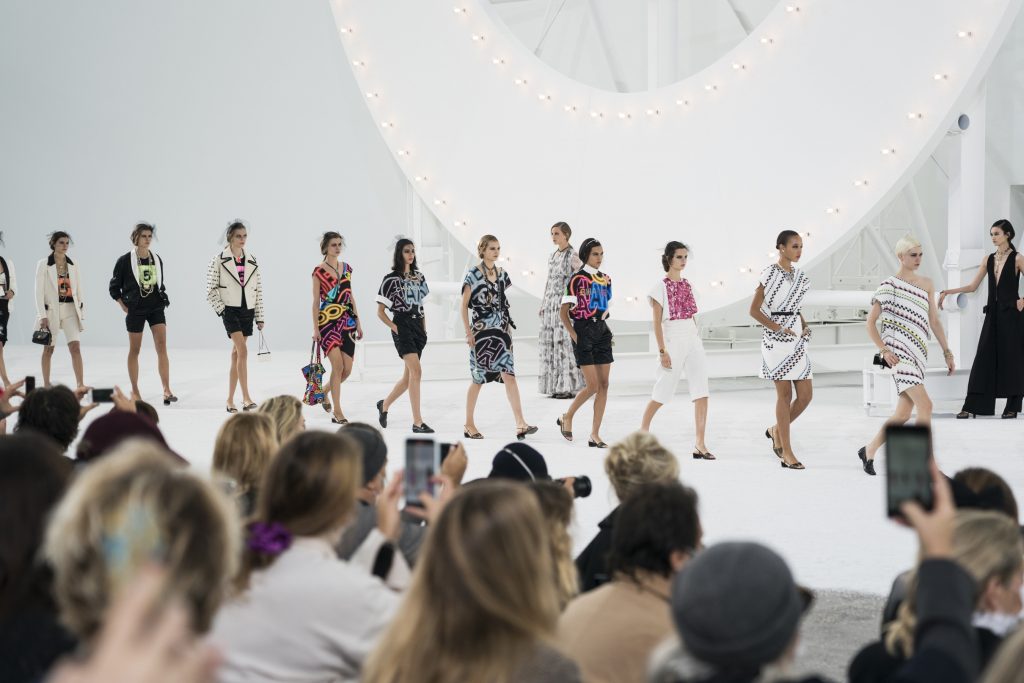
The Lagerfeld years at Chanel produced wonderful and magnificent memories and poignant point of views for consumers to feel renewed each time they purchase a Chanel product. But like all memories, fashion memories fade over time and faster now than ever before. The customers have to be reminded again and again of the worth of the brand and what the brand stand for in terms of products and in terms of values. Now, it’s Viard turn to carry the torch forward linking the past to the present and the future.
